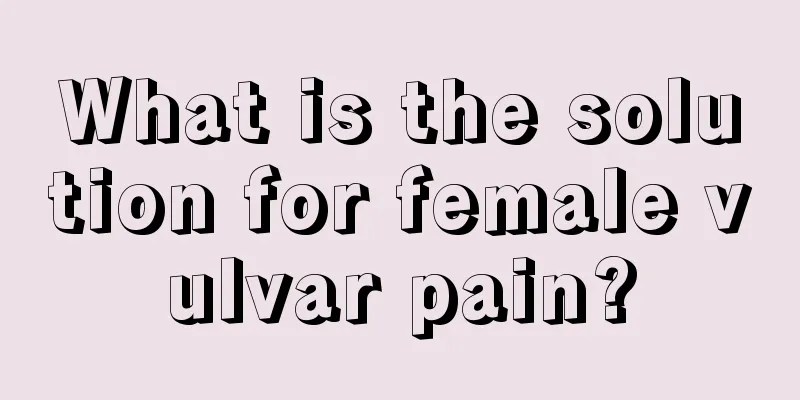Can congenital uterine malformation be treated?

|
Some women often worry about their congenital uterine malformations, fearing that it will affect their future pregnancy problems. In fact, congenital uterine malformations are quite common. For some people, uterine malformations will affect future conception, while for others, it will basically have no effect on uterine conception. Moreover, if uterine malformation occurs, it can be corrected if active treatment is carried out. Uterine anastomosis Except for those with bicornuate uterus and recurrent miscarriage, other causes of miscarriage not caused by uterine malformation can be treated with uterine anastomosis. A horizontal incision is made from one uterine horn to the opposite uterine horn and the uterine cavity is cut into. If there is a septum, it should be removed. The incision can be sutured longitudinally with absorbable sutures in the seromuscular layer without passing through the endometrial layer. The apexes of the incisions on both sides of the uterine horns are brought together to form a longitudinal suture so that the corrected uterus has a complete uterine cavity. If the distance between the two sides of the uterine cavity is far, a "V"-shaped incision can be made at the fundus of the uterus and the suturing method is the same as above. Uterine septum resection It can be done through abdominal surgery or surgery. At present, many domestic hospitals adopt the method of removing the uterine septum under monitored supervision, which improves the safety of the operation and achieves a success rate of about 75%. The operation should be performed 5 to 10 days after menstruation, using 5% glucose as the uterine distension fluid and laser or electric knife resection, with the uterine septum cut open from bottom to top. To prevent postoperative intrauterine adhesions, an IUD can be inserted. The recurrent miscarriage rate after surgery is reduced, and the full-term pregnancy rate and delivery rate are increased. Rudimentary horn hysterectomy In cases of rudimentary horn pregnancy, rudimentary horn of uterus with functional endometrium causing menstrual blood retention, and those diagnosed with rudimentary horn of uterus during the non-pregnancy period, a rudimentary horn of uterus must be removed, and the fallopian tube on the same side must be removed at the same time to avoid ectopic pregnancy in the future. After the above corrective surgery, contraception must be continued for more than one year before pregnancy can be achieved, and cesarean section is the preferred method of delivery. For congenital uterine malformations, symptomatic treatment can be carried out through the three surgical methods mentioned above. Generally speaking, the effects are very good, so people with congenital uterine malformations do not have to worry too much. As long as they can actively treat it, they can give birth to new life just like a normal uterus. |
<<: Is calcification of breast fibroids serious? What should I do?
>>: What is the cause of leucorrhea with blood?
Recommend
Can Tibetan medicine cure adenomyosis?
Adenomyosis is a localized lesion of the endometr...
What is the normal level of estradiol in early pregnancy?
When pregnant women go to the hospital for a chec...
Low-lying placenta bleeding
If the placenta is low and bleeding occurs during...
Why do we always see "mosquitoes" flying in front of our eyes when we stare at a white wall?
Have you ever had this experience? Under a bright...
Will breathing difficulties in late pregnancy affect the fetus?
Dyspnea in the late pregnancy is a common physiol...
What is the HPV 9-valent vaccine? Why is it so hard to get a shot? Be sure to keep your eyes open when making an appointment! (I)
As the first vaccine that can prevent cervical ca...
How long does it take for second-degree cervical erosion to turn into cancer?
The health of the cervix is an issue that every...
Good news for crybabies, because tears actually contain happy hormones!
Audit expert: Liu Dongbao Chief Physician of Opht...
Do uterine polyps need to be removed?
Uterine polyps are a common gynecological disease...
Can cold uterus in girls generally lead to infertility?
Nowadays, many female friends are suffering from ...
What is the best plan for pre-pregnancy preparation?
Introduce to you the best plan for preparing for ...
What should girls eat to treat uterine cold
Although uterine cold is not a very serious disea...
Do you know how to use medicine correctly?
Do you know how to use medicine correctly? Author...
How long does it take to get pregnant after taking metronidazole?
Although drugs such as metronidazole are very com...
Can uterine coldness cause lower abdominal obesity?
The impact caused by uterine cold is relatively l...









